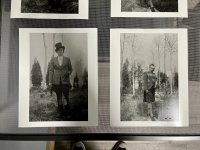Yes, this was probably Gevaert film. I did think it could be Perutz, but an online check shows this film was made in Germany, like Agfa.
In the 1960s and 1970s there were many brands of "proprietary" B&W roll films. Mostly rebadged stock from Europe, bought in bulk by grocery and drug store chains and sold with their own branded packaging. Almost all had disappeared by the early '70s, replaced by 35mm similarly generic films.
In my home town in eastern Canada we had a studio, basically a counter in our local drug store (= pharmacy) with a closet darkroom at the back of the shop, operated by an older pharmacist who did it mostly as a hobby. He processed our films and contact printed (negatives to be enlarged were sent out to a studio in Moncton, NB) all my family snaps. Many of these I still have in two very old albums. The quality is - fantastic.
As a high school student keen on photography, but without much money to indulge my hobby, I often turned to him for advice. He gave me many useful tips on processing and printing.
His "secret" with all the films he souped was - Dektol, full strength. Three to four minutes. At whatever temperature the room was at the time.
He told me it always produced a usable image. I've used this advice now and then for old films, and it has never let me down. Bearing in mind we all used roll films back then, of course. Hardly anyone had a '35'. I recall the chief pharmacist had a Nikon, probably an F, but he would never ever allow the photo-chemist anywhere near his films.




